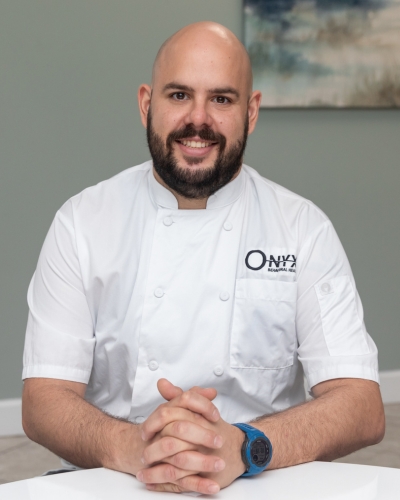Mental health group activities can be very effective for developing coping skills and techniques to reduce stress, feel connected to others, and learn from people’s experiences in similar situations.
People are naturally social, and we find it meaningful to share our experiences with others, so it shouldn’t surprise us that many seek group therapy options when experiencing mental illness. Let’s explore eight mental health group activities for adults in recovery to see which may work best for you.
1. Mindfulness Meditation
Mindfulness is a type of meditation that focuses on paying attention to what you are feeling in the moment. In guided mindfulness sessions, your instructor will help the group observe thoughts and sensations without judgment to promote emotional regulation and mental clarity and reduce stress and anxiety.
Over time, practicing mindfulness regularly (on your own and in a group) can also enhance focus, improve sleep quality, and boost overall well-being.
The group setting provides a supportive environment for beginners and experienced practitioners alike, and it may promote a sense of connection to others who may be experiencing similar feelings.
2. Cognitive-Behavioral Therapy (CBT) Group Discussions
CBT group discussions are an effective tool in mental health recovery as they focus on identifying and challenging the negative thought patterns and behaviors that contribute to your condition.
In these sessions, participants learn to reframe their thinking patterns, such as catastrophizing or all-or-nothing mentalities, and replace them with healthier perspectives.
This group setting allows individuals to share their experiences and hear from others who are likely going through similar feelings, helping everyone feel heard and understood.
Over time, these discussions may help participants develop practical coping skills to prevent relapse and improve emotional regulation.
3. Art Therapy Projects
Art therapy projects provide a creative outlet for individuals in recovery to express and process difficult emotions that may be hard to articulate with words. Drawing, painting, and other art forms can help participants explore trauma, shame, guilt, or pain related to their mental health in a safe, non-judgmental environment.
This therapy focuses on emotional release and self-discovery, allowing participants to understand their feelings better and reduce emotional stress. It can be especially helpful for those who tend to suppress emotions or have experienced trauma.
4. Group Journaling Sessions
Group journaling generally involves participants taking turns to write in a shared journal. Writing in the journal may be optional or mandatory, depending on the dynamic, but it usually also involves each participant reading what they wrote aloud.
If some participants are shy about writing in the journal and reading it out loud, the instructor may support them as needed and turn the “passing of the journal” into a game to determine who’s next, which makes the process more fun and less intimidating.
This dynamic provides a structured way for participants to reflect on their thoughts, feelings, and progress. Additionally, sharing journal entries with the group encourages accountability and emotional openness while helping participants feel less isolated in their struggles since they can hear from others who experience similar feelings.
5. Role-Playing Scenarios
Role-playing scenarios in group settings offer a hands-on approach to practicing vital interpersonal skills such as communication, conflict resolution, and assertiveness.
In mental health recovery, these scenarios help individuals prepare for real-life situations that may trigger stress or other mental illness symptoms, such as navigating difficult conversations or managing conflict.
By acting out these scenarios, participants build confidence in their ability to handle social and emotional challenges, reduce anxiety about future interactions, and reinforce healthier behavior patterns in a controlled, supportive environment.
6. Group Breathing Exercises
Much like group mindfulness, group breathing exercises are an excellent way to develop emotional regulation and healthy coping habits and reduce stress and anxiety.
Practicing breathing exercises in a group setting enhances the sense of community and support while teaching participants how to calm their minds and bodies during distress.
Techniques such as deep breathing or progressive muscle relaxation help regulate the nervous system, lower cortisol levels, and foster relaxation.
Over time, these exercises can become a go-to coping mechanism to deal with cravings, anxiety, or emotional triggers.
7. Support Circles
A support circle is an intimate group activity where participants share their challenges, struggles, and triumphs in recovery.
This sharing fosters a sense of community and emotional connection as group members offer feedback, encouragement, and empathy. It helps participants feel heard and validated, reducing feelings of isolation and loneliness often associated with mental illness.
Support circles also promote accountability. Individuals are encouraged to track their progress and hold themselves and each other accountable for their recovery goals.
8. Gratitude Practices
Gratitude practices in group settings encourage participants to focus on the positive aspects of their lives, helping to shift attention away from negative thoughts and emotional distress.
In mental health recovery, fostering gratitude can significantly improve emotional well-being by promoting optimism, resilience, and a sense of contentment.
Listening to others share what they are grateful for in a group helps participants reframe their experiences, appreciate small victories, and find meaning in their ongoing recovery journey instead of seeing sobriety as the only valid state of being.
How to Choose the Right Group Activities for Mental Health
Everyone’s recovery journey is different, and everyone has different needs and responds differently to therapeutic strategies. As a result, what works for you is not necessarily what works for others and vice versa, so you need to find meaningful activities.
Here are some key considerations to take when choosing the best group activities for mental health:
- Identify your goals. Determine whether your primary focus is emotional expression, skill-building, relaxation, or self-reflection. This will help match a group activity to your desired outcome, such as coping with stress, improving communication, or healing from trauma.
- Explore the group’s dynamics. Some people may benefit from intimate settings like support circles, while others might thrive in creative or active environments like art therapy or role-playing.
- Focus on comfort and engagement. Choose activities that you feel comfortable engaging in. Creative outlets like art therapy may be more effective than discussion-heavy activities if you struggle with verbal expression.
- Evaluate how far along the journey you are. While this is not mandatory, you may want to start with specific group activities before moving to others. For example, mindfulness of breathing exercises may suit you if you’ve never been to group therapy. At the same time, more CBT discussions may be better if you’ve already received some individual treatment before.
Seek Group Activities for Mental Health Recovery
For many people, connecting with others via group therapy activities is one of the keys to long-term recovery. They find these dynamics to be deeply meaningful and healing.
If you are one of these or if you are curious about their benefits, we encourage you to seek mental health group therapy options. Onyx Behavioral Health provides mental health rehabs and group dynamics like psychoeducation group treatment, which combines education and psychological support within a group setting.
Contact us via our form or at (888) 242-5716 to learn about our approach and how our group therapy options can help support your recovery.





 Kendra Cemoin
Kendra Cemoin Michaela Welk, LMHC
Michaela Welk, LMHC Bunny Berman
Bunny Berman Tank
Tank Richard E. LoSardo, MD
Richard E. LoSardo, MD Christopher Payne
Christopher Payne Bernard Benjamin
Bernard Benjamin